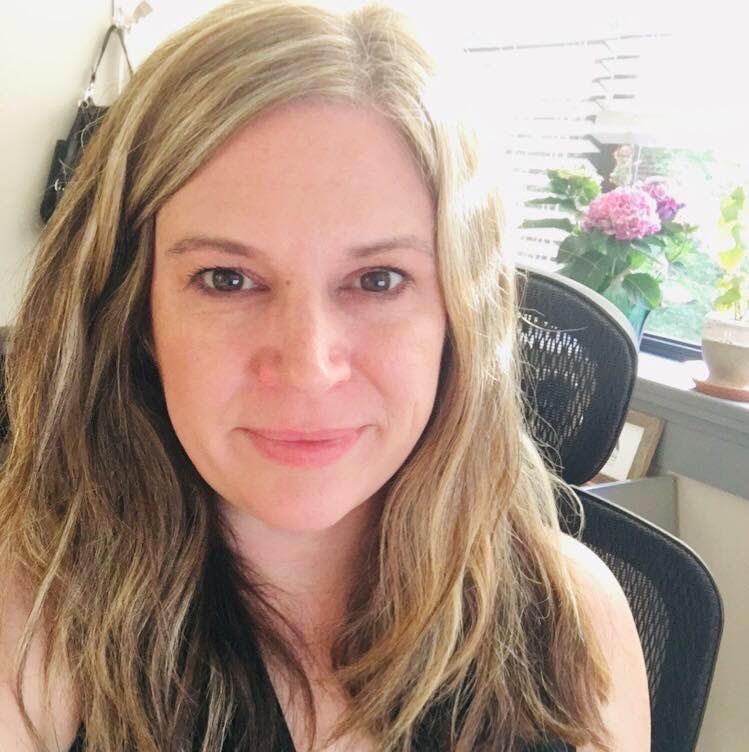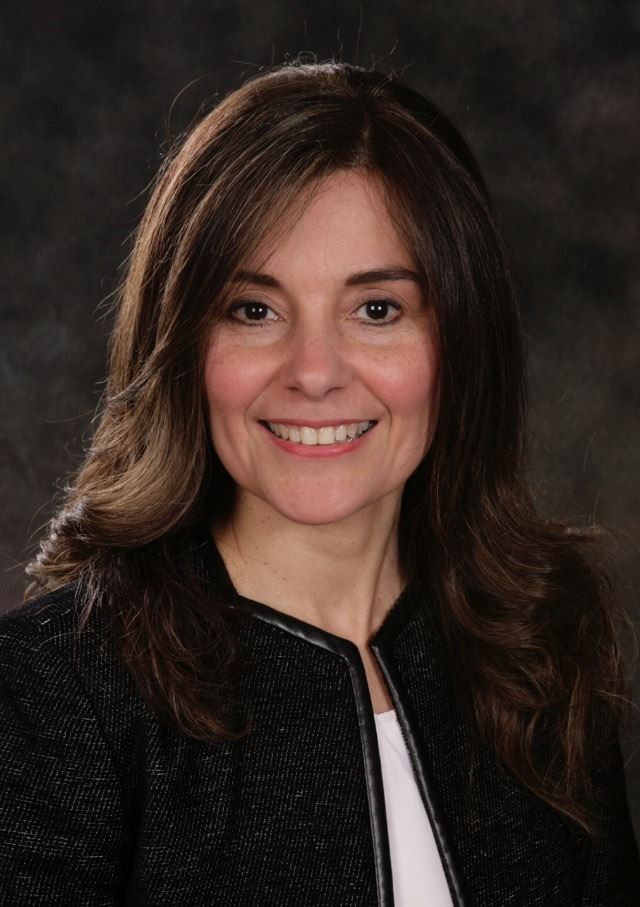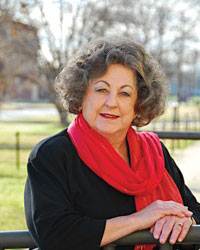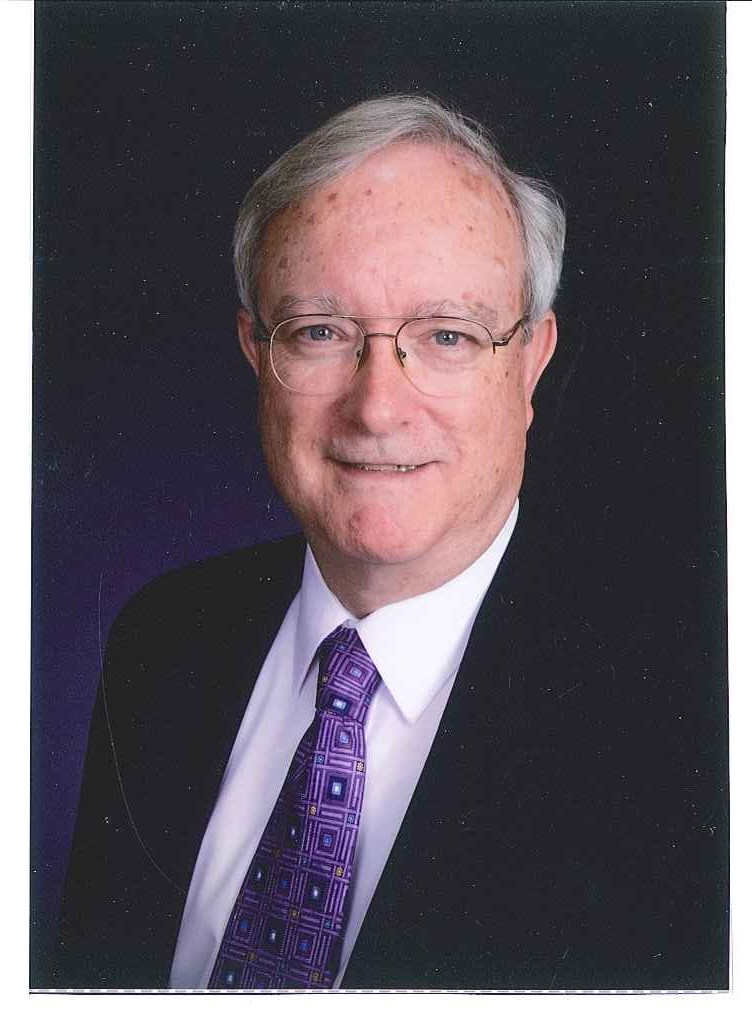
|
Upcoming Events and Deadlines
Presentation Proposals for 2020 National Conference Due - 3/13/2020
National Board Applications - 4/1/2020
Public Issues Leadership Development Conference (PILD) - 04/05/2020 • Arlington, VA
Nominations for National Committees - 5/1/2020
Scholarships Deadline - 5/1/2020
- Justin Morrill Scholarship
- Redinger Administrator/Leader Scholarship
Grants Deadline - 5/1/2020 (a second round for applications is announced due to available funding)
- Professional Development Programming Grant
- Rita T. Wood Grant
2020 ESP National Conference - October 5 thru 8, 2020 * Rochester, New York
For additional events and deadlines, visit the ESP Home page
National ESP Board Elections
Applications are now being accepted for the North Central Region Vice President, Southern Region Vice President and the 2nd National Vice President from the Southern Region. Letters of support from your chapter president and Extension director, as well as a brief video are components of your application. Please visit the National Board Elections page for detailed information on applying.
PILD: Expanding your Extension Professional's T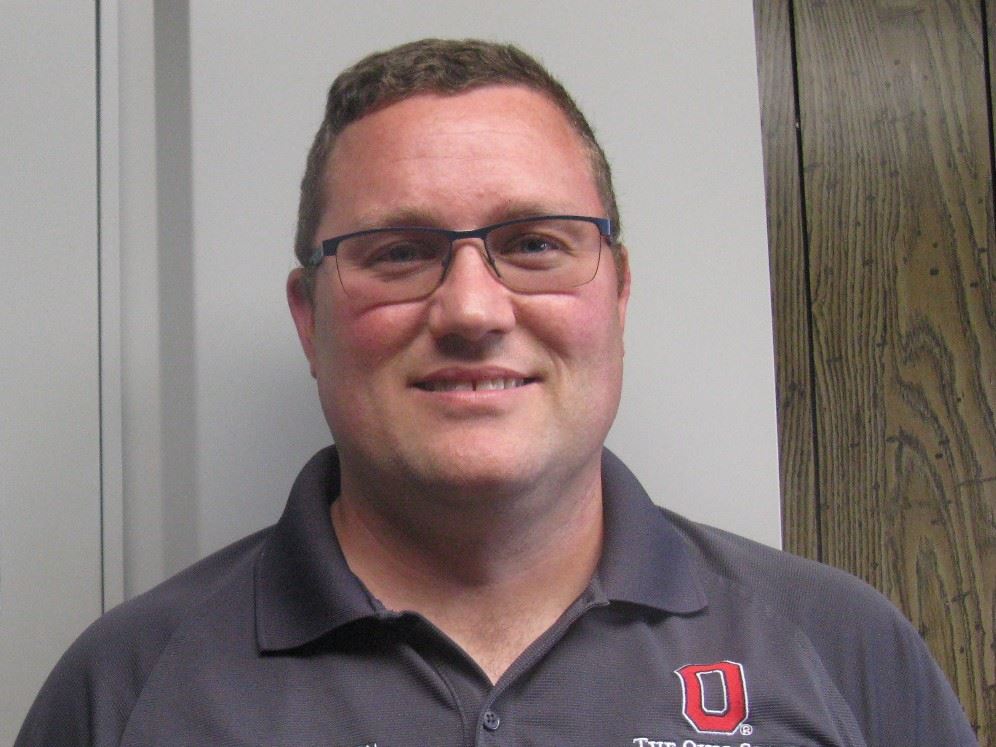 oolbox
oolbox
Travis West, North Central Region Vice President and Chair, Public Issues Committee
Public Issues Leadership Development (PILD) will take place April 5-8, 2020 in Arlington, VA and provides an opportunity for Extension professionals to learn about “Moving Knowledge into Solutions”. Attendees will develop their skills in telling Extension’s story and be motivated to travel to Capitol Hill and showcase the value of Extension to Congressional members and staff. Even if you are one of those people that feels like talking to legislators is not your strong suite (like myself the first time I attended PILD), the PILD sessions and panelists will have you prepared and energized to deliver a valuable message on Wednesday to your congressional staff.
We have two amazing presentations for our keynote and capnote. Our keynote presentation will be given by Dr. Jermaine Davis, Professor of Communication Studies at Century College and Organizational Leadership at St. Catherine University. Before receiving the prestigious College Instructor of the Year Award, Dr. Davis worked in corporate America for IBM, Keebler Cookies, and Frito-Lay in the areas of sales, management, and marketing. He has authored 10 books including Get Up Off Your Butt and Do It Now, Leading with Greatness, The Art of Communicating Effectively with Diverse People, and The Quote Journal Series: 52 Quotes to Help You Succeed.
Our capnote presentation will be given by Dr. Marshall Stewart, Vice Chancellor for Extension and Engagement at the University of Missouri. Throughout his 30-year career, Stewart has been recognized for his expertise in leadership development, strategic planning, legislative affairs, educations, youth, and agricultural education and advocacy. Both speakers have impressive backgrounds and are sure to motivate and inspire you.
Registration and the draft schedule can be viewed at the conference website: https://www.jcep.org. Early-bird registration is $410 and ends March 13th. Rooms at the conference hotel are $230 per night.
|
|
On January 21, 2020, Patten & Patten Inc. Investment Advisers, who manage investments for Epsilon Sigma Phi, delivered a portfolio update and review for the Resource Development and Management Committee. The Development portfolio’s market value was $842,008 and the Organization account was worth $257,709 as of January 13, 2020. The combined value of the two portfolios was greater than $1 Million.
In 2019, the total returns for both portfolios were in excess of 17%. Both portfolios recovered from the 4Q 2018 stock market correction. The two accounts generated $30,508 of income in 2019.
Given the performance of the stock market in 2019, Patten & Patten is cautious toward increasing the allocation to equities, not withstanding their general favorable view of economic conditions. They might shift to a more defensive posture as the year progresses. Asset allocation charts for both portfolios were presented.
Outlook and Market Commentary by Patten & Patten: A record setting stock market performance characterized the final year of the decade. Both the stock and bond markets responded to a shift in policy by the Federal Reserve, which was a mid-cycle adjustment because of uncertainties associated with trade war and worrisome economic data, particularly as related to global manufacturing. The combined performance of stock and bond markets was the best since 1998. Patten & Patten look forward to the new year (2020) with optimism.
Brexit occurred on January 31, 2020. The extent of market disruption will depend on whether Brexit is a non-event or chaotic. Most likely, the economic impact of Brexit will fall somewhere in the middle, but the political, cultural, and historic reverberations will be felt for generations.
Recent developments with Iran are an important reminder that geo-political uncertainties can surface without much warning.
China phase 1 and phase 2 trade agreements will have an effect.
First quarter metrics for 2020 to track for end of bull market are: the unemployment rate does not suggest imminent recession; leading economic indicators are stable; and recessionary indicators point to a limited downside risk.
Patten & Patten delivers written quarterly reports to the ESP Executive Director, ESP President and RDM committee. In addition, Patten & Patten gives oral presentations to the Board and RDM committee in January and late June/early July.
NOTE: This report was prepared prior to the global impact of the coronavirus disease (COVID-19) that began in China.
Membership Recruitment and Retention
Luann Boyer, Committee Member, Membership Recruitment and Retention
Congratulations ESP Membership Committees!! You’ve completed your 2020 membership submissions and hopefully had a good recruitment for new members, and for Life Members from those who have retired. But, don’t think it’s time to set back and wait until next fall to do a membership drive for your chapter.
Membership Recruitment and Retention is a year-around committee. And, among those things the committee needs to do is submit information for the Achievement in Chapter Membership which is part of the Chapter Annual Report due May 1. So, to be ready for that report, start now putting together documents you would like to share with the ESP National Membership Committee highlighting your Chapter’s efforts.
Some of the items you can include with your report are documents used for recruiting new members as well as items to encourage current members to renew. After recruitment, what did you do to welcome new members - personal contact or invitation to an ESP event, did they get the New Member Certificate from National? Does your chapter assign a mentor to help engage new members to become active? When your chapter meets, do you have or hold an initiation of new members? Don’t forget to snap a photo to include with your Chapter Report.
As part of your year-around membership plan, be sure to contact members who retire and invite them to become an ESP Life Member. Some chapters have incentives for Life Members by paying some (or maybe even all) of the dues. This is a small way to recognize those who have been long-time members and held leadership positions with your chapter. Keep them involved by regular contact through newsletters, etc. ESP is unique among Extension professional organizations since Life Members can hold Chapter and National leadership positions.
Elevate Extension Talks: 200 Reasons to Attend the National Meeting this Year
Travis West, North Central Region Vice President and Chair, Public Issues Committee
The ESP Public Issues Committee is excited to announce the Elevate Extension Talk contest for 2020. This new opportunity is a spin-off of the Elevator Speech contest held at the National Meeting and is open to all ESP members. Why should you participate? First, you are contributing to the efforts of marketing for the National Meeting attendance to ESP members nationwide. Second, you can win a prize!
Videos should be sixty seconds or less in length and address the topic “Top Reasons to Attend the Next National Meeting.” Record your Elevate Extension Talk on your cell phone or camera, then upload it using the form located on the website at https://espnational.org/2020-Elevate-Extension-Talks/. Deadline to upload your video is April 10, 2020.
Members who submit the top three videos will receive the following prizes: 1st- $75, 2nd- $50, 3rd- $25. (Prizes will be sent directly to the member shortly after the conclusion of the contest). The top three videos will be announced in May 2020 and will also be featured on the National ESP site. Pencil in 10 minutes over the next month to record your video and upload it for a chance to win $75! For more information about the Elevate Extension Talks contest, contact Travis West at west.222@osu.edu.
2019 "Spotlight on Extension" Elevator Speech Contest Winners
Public Issues Committee
The Elevator Speech Contest was held during the National ESP Conference in Colorado Springs, Colorado in October 2019. The topic for the contest was Focus on Extension (how does Extension make a difference? Why are we here?) Each contestant recorded their speech which was limited to 30 seconds (about 75 words). The winners of the contest were: 1st place - Janet Johnson, Alpha Pi / Alabama, 2nd place - Diana Doggett, Alpha Kappa / Kentucky and 3rd place - Jennifer Bridge, Alpha Kappa / Kentucky.
Please check out the front page of the ESP website where these individuals are highlighted. Congratulations to our winners!!
A History of the Extension Professionals' Creed
Adapted from a blog post, Creeds Associated with the Extension Service, February 21, 2020, By Gary Moore, Professor Emeritus, North Carolina State University. Click here for the entire blog post.
There is a creed for Extension Professionals (commonly known as extension agents, workers, advisors or educators). However, one might get confused in trying to find the current version because the literature refers to both the “Extension Worker's Creed” and the “Extension Professionals' Creed.”
This creed was written by W. A Lloyd (the founder of Epsilon Sigma Phi, an Extension Honorary) in 1922 as a New Year’s greeting to county agricultural agents. It was adopted by Epsilon Sigma Phi in 1927. The original creed was titled “The Extension Worker’s Creed” and has been revised from time to time to reflect changes in societal values, educational trends and federal law.
This is the current Extension Professionals' Creed.
I BELIEVE in people and their hopes, their aspirations, and their faith; in their right to make their own plans and arrive at their own decisions; in their ability and power to enlarge their lives and plan for the happiness of those they love.
I BELIEVE that education, of which Extension is an essential part, is basic in stimulating individual initiative, self-determination, and leadership; that these are the keys to democracy and that people when given facts they understand, will act not only in their self-interest, but also in the interest of society.
I BELIEVE that education is a lifelong process and the greatest university is the home; that my success as a teacher is proportional to those qualities of mind and spirit that give me welcome entrance to the homes of the families I serve.
I BELIEVE in intellectual freedom to search for and present the truth without bias and with courteous tolerance toward the views of others.
I BELIEVE that Extension is a link between the people and the ever-changing discoveries in the laboratories.
I BELIEVE in the public institutions of which I am a part.
I BELIEVE in my own work and in the opportunity I have to make my life useful to humanity.
Because I BELIEVE these things, I am an Extension professional.
A much, much earlier version of the creed (date unknown) is substantially different. In the early days of Extension, the primary focus was on the farm. This version of the creed reflects that. Later, the mission of Extension broadened substantially; thus the creed was rewritten to reflect that change. This early creed reads:
I love the open country with its changing seasons; the smile of the sun; the patter of the rain; the caress of the wind; the odor of freshly turned soil; the song of the birds; the laughter of the trees; the peace of the country day and the starry silence of the country evening.
I love the growing crops, the impatient rustle of the corn; the golden billow of the ripening grain; the blue shimmer of the grass; the sweet scent of freshly cut hay; the glory of the orchard in full bloom and the musky odor of ripening fruit.
I love God's creatures that minister to man's needs. Their friendship, their gentleness and their confidence in mankind represent the response of service to kindness and care.
BECAUSE I LOVE THESE THINGS
I believe in the life of country people; in their hopes, their faith, their aspirations; in their ability and power to enrich their own lives and to plan for the happiness of those they love.
I believe in the farmer as essential to the Nation's life; as a fundamental source of its wealth; as its haven of security from those who would despoil it.
I believe in the farmer's right to a comfortable living; to such recompense for his capital, labor and skill as will make him the peer of those who work in office or shop; in his right to cooperate with his neighbors in seeking the service of science and security in his farm business.
I believe in the sacredness of the home as the real goal of farming, and in the home's influence on the family's culture, grace and power.
I believe in the rural boy and girl; in their longings for opportunity; in their right to trained minds, healthy bodies and loyal hearts.
I believe in the Extension Service; in the opportunity it offers to do useful work; in its touch of human sympathy and its joys of fellowship.
I believe in the public institutions of which I am a part; in their right to my loyalty and enthusiasms in extending their knowledge and ideals.
With sincerity of purpose, I pledge myself to work faithfully and earnestly with farmers, homemakers, and young people in helping to make agriculture prosperous, home life beautiful, the rural community satisfying and my own life one of unselfish service.
BECAUSE I LOVE THESE THINGS AND BELIEVE THESE THINGS, I AM AN EXTENSION WORKER.
Concluding Remarks
John Lawrence, Vice President for extension and outreach programs at Iowa State University, calls the Extension Professional’s Creed “… a touchstone that can help us all stay grounded” and encourages us to read it when we are having a good or not-so-good day. You should read his short 2017 message about the Extension Professionals' Creed.
Webinar Best Practices
Whitney Elmore, Member of the Professional Development Committee
Webinars have become an increasingly popular way of delivering useful information in a short period of time without the time and expense of travel. Because of their popularity, one might be prone to think webinars are exceedingly easy to deliver. However, like with any technology and educational methodology, there are pitfalls to avoid and best practices to implement for a successful delivery.
First Things First
First, consider whether the topic is best delivered through webinar. Some topics lend themselves well to distance education like new cultivars of roses on the market, a “how to” tutorial on hydroponics, or an industry update. Others are more appropriate for an in-person presentation such as a panel discussion on current issues in Extension, a sales pitch for a book or product, or an old idea or concept that you’re hoping to revive. Viewers expect to see new and fresh information during webinars that are easily incorporated into their lives or work. If they are not engaged, they will disconnect- literally, with the quick click of a button. There’s no opportunity to regain webinar participant attention once they’ve logged out like there would be in a classroom setting, so getting it right from the start is integral.
Technical and Content Considerations
Once you’re sure that your topic is relevant, truly informational and ready to share, the next step is dividing the task of developing the webinar into two segments; the technical side of the delivery and the content side of the information. On the more technical side, you should be comfortable speaking to an audience that’s online. Webinar delivery feels very different from a traditional setting where non-verbal clues give you an indication of how well the topic is going over- or under. Without those clues, the on-camera side of the screen can feel very lonely; fast. Subject matter expertise is paramount but so is being comfortable on screen. If you’ve never done a webinar, practice by recording yourself on camera with the same technology you’ll be using for the webinar. Review the recording and have others that you trust view the webinar and ask for a constructive critique. Be open to accepting the suggestions and formulate a plan for how to incorporate these changes during the webinar.
Platform Considerations
Another best practice that’s a critical consideration early in the development of a webinar is the choice of platform. There are many to choose from, but most universities or county governments have a chosen platform, like Zoom, that’s easily accessible and user friendly. Look for a platform you are familiar with, one that is easy to download and use for your audience, one that allows you to share a screen, and one that allows you to record the webinar for future use. It goes without saying that preparing by testing the platform’s capability and ease of use is a good idea. It’s also a good idea to prep by doing a few dry runs on the platform. Consider using a headset for clear communication. Don’t rely on the computer’s microphone. And, test these before the day of the webinar. A backup computer and printed set of slides would also be good to have on hand and ready at a moment’s notice. Another best practice is to develop a list of anticipated questions so you’re ready to answer, and you can use them as open-ended questions for your audience to enhance engagement.
Make sure that you promote your webinar well in advance via email, social media platform, press release, etc. Send your potential attendees several reminders and include one on the day of the webinar with the link and any special instructions. A brief 30 second video about an upcoming webinar embedded in an email reminder is a great way to get attention and peak interest.
With any presentation, ensure you have developed focused and concise slides with only the most relevant content. You want them listening to your voice, watching you on the screen, and using the information for reference later – not just staring at notes on a slide. Ensure that charts, pictures, illustrations, etc. are referenced, readable and in high resolution. Pictures really do say a thousand words, so really consider whether you can provide evidence of what you’re conveying on screen prior to offering a topic that you cannot deliver. For example, if you are discussing how to build and install a rain barrel without photos or video, you’re setting yourself up for a failure. Grammar errors and misspelled words will glare at the audience on screen, so have others check your slides for mistakes. Engage with your audience by pausing for questions every 4-5 slides and use polls in specific places (don’t overdo it, though) to engage and get real-time feedback about the effectiveness of the presentation.
When deciding on what content to include and what to leave out, make sure the information is necessary to relay the point of the webinar. If you question whether to include a specific piece information, a picture, figure, or chart, then it probably doesn’t belong. When in doubt, leave it out. For a successful webinar, you really should be a subject matter expert on the topic. Otherwise state your intent and reason for presenting the topic so that your audience is aware and knows what to expect. Offering more than you can deliver is a recipe for disaster and a “flop” webinar.
Finally, leave plenty of time at the end for questions. If your webinar is 45 minutes long, 15 minutes is probably not enough time for questions since those using chat boxes must type. Read the questions back to your audience for clarity and respond in a conversational manner just like if the person were in front of you. Round out the webinar with a sincere thank you and any updates you might wish to share for future webinars or other offerings, but stay on topic. If you are requesting that participants fill out an evaluation or survey at the end, state this early on and remind the audience at the end with an on-screen prompt. Let them know how they’ll receive the survey (email, on screen poll, etc.) and plan to follow up with participants. Offer an email where you may be contacted for more information and reach out a week or two later by email to ask if there are any lingering questions you might be able to answer. A follow up email with a link to the recording is a great way to say thanks for viewing and offer support while potentially opening new audiences.
To summarize, webinars are a quick and effective method for sharing information or educating an audience but lots of prep work and forethought is required to ensure your audience loves what they are watching. Remember to consider both the technical and topic content when preparing a webinar. To recap, here’s a list of the best practices covered:
a. Is the topic right for a webinar?
b. Choose the right platform
c. Practice, practice, practice using the platform
d. Anticipate questions
e. Use a headset and prep a backup computer
f. Advertise your webinar
g. Develop content that’s appropriate, referenced, easy to read, applicable
h. Check for errors on the slides
i. Engage the audience every 4-5 slides
j. Use polls, where appropriate
k. Edit content
l. Leave enough time for questions
m. Offer details on evaluations/surveys
n. Follow up with an email and recording link
 I
picture an elephant restrained by a rope tied to a stake in the ground.
Like that elephant, we can be limited by our beliefs in our abilities.
Understanding the dynamics of a Fixed and Growth Mindset can free us to
improve and grow our skills and abilities.
I
picture an elephant restrained by a rope tied to a stake in the ground.
Like that elephant, we can be limited by our beliefs in our abilities.
Understanding the dynamics of a Fixed and Growth Mindset can free us to
improve and grow our skills and abilities.